Dominic Schupke
Explainable AI for UAV Mobility Management: A Deep Q-Network Approach for Handover Minimization
Apr 25, 2025Abstract:The integration of unmanned aerial vehicles (UAVs) into cellular networks presents significant mobility management challenges, primarily due to frequent handovers caused by probabilistic line-of-sight conditions with multiple ground base stations (BSs). To tackle these challenges, reinforcement learning (RL)-based methods, particularly deep Q-networks (DQN), have been employed to optimize handover decisions dynamically. However, a major drawback of these learning-based approaches is their black-box nature, which limits interpretability in the decision-making process. This paper introduces an explainable AI (XAI) framework that incorporates Shapley Additive Explanations (SHAP) to provide deeper insights into how various state parameters influence handover decisions in a DQN-based mobility management system. By quantifying the impact of key features such as reference signal received power (RSRP), reference signal received quality (RSRQ), buffer status, and UAV position, our approach enhances the interpretability and reliability of RL-based handover solutions. To validate and compare our framework, we utilize real-world network performance data collected from UAV flight trials. Simulation results show that our method provides intuitive explanations for policy decisions, effectively bridging the gap between AI-driven models and human decision-makers.
Learning Based Dynamic Cluster Reconfiguration for UAV Mobility Management with 3D Beamforming
Jan 31, 2024Abstract:In modern cell-less wireless networks, mobility management is undergoing a significant transformation, transitioning from single-link handover management to a more adaptable multi-connectivity cluster reconfiguration approach, including often conflicting objectives like energy-efficient power allocation and satisfying varying reliability requirements. In this work, we address the challenge of dynamic clustering and power allocation for unmanned aerial vehicle (UAV) communication in wireless interference networks. Our objective encompasses meeting varying reliability demands, minimizing power consumption, and reducing the frequency of cluster reconfiguration. To achieve these objectives, we introduce a novel approach based on reinforcement learning using a masked soft actor-critic algorithm, specifically tailored for dynamic clustering and power allocation.
Passive Sensing and Localization in an Aircraft Cabin Using a Wireless Communication Network
Dec 18, 2023Abstract:Advances in wireless localization techniques aiming to exploit context-dependent data has been leading to a growing interest in services able of localizing or tracking targets inside buildings with high accuracy and precision. Hence, the demand for indoor localization services has become a key prerequisite in some markets, such as in the aviation sector. In this context, we propose a system to passively localize and track passenger movements inside the cabin of an aircraft in a privacy preserving way using existing communication networks such as Wi-Fi or 5G. The estimated passenger positions can be used for various automation tasks such as measurement of passenger behavior during boarding. The paper describes a novel wireless localization system, based on Artificial Neural Networks, which passively senses the location of passengers. The position estimation is based on the observation of wireless communication signals that are already present in the environment. In this context, "passive" means that no additional devices are needed for the passengers. Experimental results show that the proposed system is able to achieve an average accuracy of 12 cm in a challenging environment like an aircraft cabin. This accuracy seems sufficient to control passenger separation.
Physical Layer Security in a Private 5G Network for Industrial and Mobility Application
Oct 09, 2023



Abstract:Cellular communication technologies such as 5G are deployed on a large scale around the world. Compared to other communication technologies such as WiFi, Bluetooth, or Ultra Wideband, the 5G communication standard describes support for a large variety of use cases, e.g., Internet of Things, vehicular, industrial, and campus-wide communications. An organization can operate a Private 5G network to provide connectivity to devices in their manufacturing environment. Physical Layer Key Generation (PLKG) is a method to generate a symmetric secret on two nodes despite the presence of a potential passive eavesdropper. To the best of our knowledge, this work is one of the first to implement PLKG in a real Private 5G network. Therefore, it highlights the possibility of integrating PLKG in the communication technology highly relevant for industrial applications. This paper exemplifies the establishment of a long-term symmetric key between an aerial vehicle and IT infrastructure both located in a manufacturing environment and communicating via the radio interface of the Private 5G network.
Precise Onboard Aircraft Cabin Localization using UWB and ML
Apr 06, 2022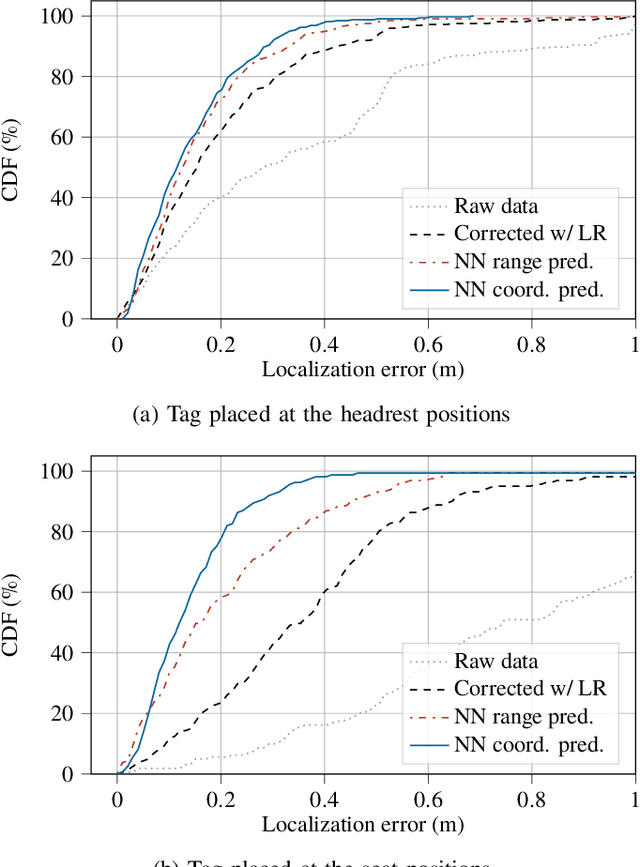
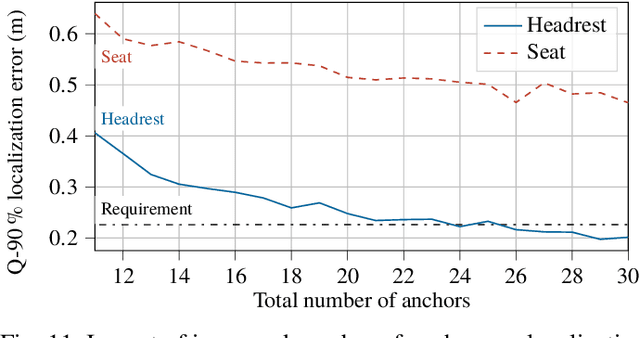
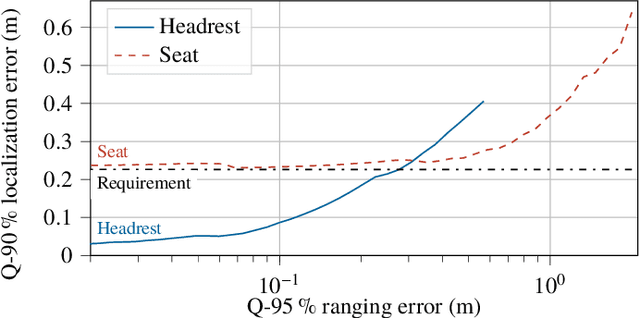
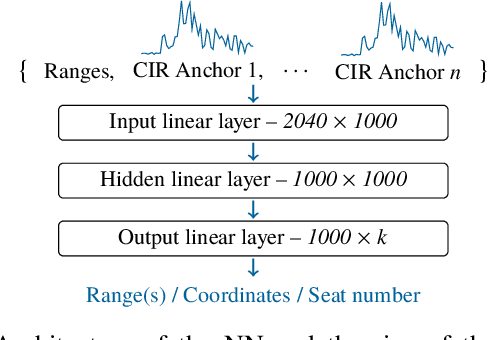
Abstract:Precise indoor positioning systems (IPSs) are key to perform a set of tasks more efficiently during aircraft production, operation and maintenance. For instance, IPSs can overcome the tedious task of configuring (wireless) sensor nodes in an aircraft cabin. Although various solutions based on technologies of established consumer goods, e.g., Bluetooth or WiFi, have been proposed and tested, the published accuracy results fail to make these technologies relevant for practical use cases. This stems from the challenging environments for positioning, especially in aircraft cabins, which is mainly due to the geometries, many obstacles, and highly reflective materials. To address these issues, we propose to evaluate in this work an Ultra-Wideband (UWB)-based IPS via a measurement campaign performed in a real aircraft cabin. We first illustrate the difficulties that an IPS faces in an aircraft cabin, by studying the signal propagation effects which were measured. We then investigate the ranging and localization accuracies of our IPS. Finally, we also introduce various methods based on machine learning (ML) for correcting the ranging measurements and demonstrate that we are able to localize a node with respect to an aircraft seat with a measured likelihood of 97%.
A Survey of Wireless Networks for Future Aerial COMmunications
Nov 07, 2021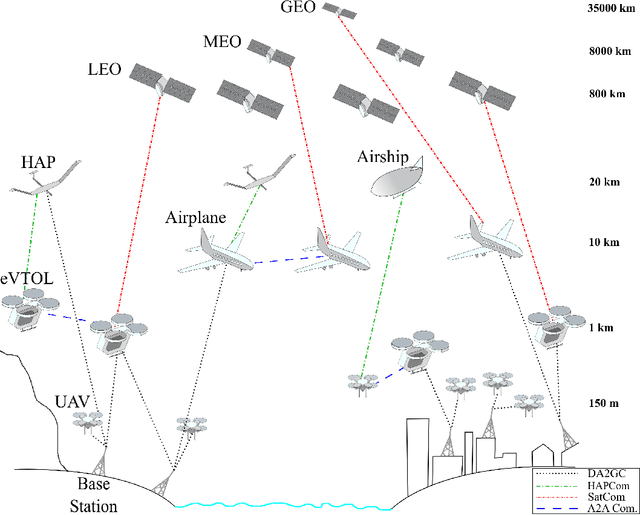
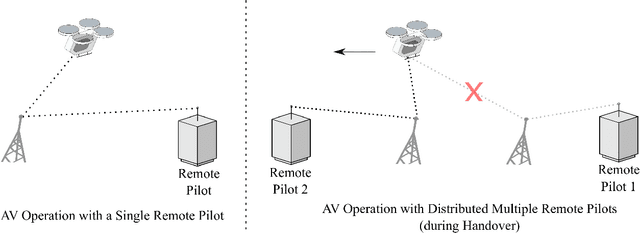
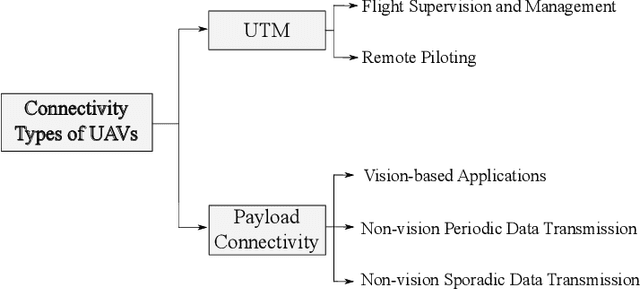
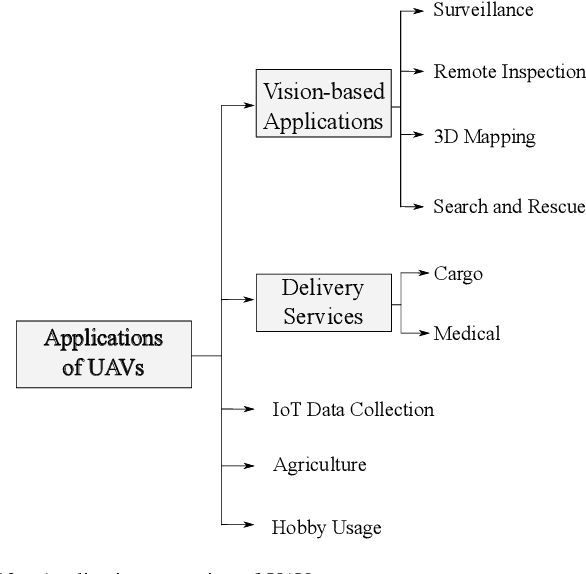
Abstract:Electrification turned over a new leaf in aviation by introducing new types of aerial vehicles along with new means of transportation. Addressing a plethora of use cases, drones are gaining attention and increasingly appear in the sky. Emerging concepts of flying taxi enable passengers to be transported over several tens of kilometers. Therefore, unmanned traffic management systems are under development to cope with the complexity of future airspace, thereby resulting in unprecedented communication needs. Moreover, the increase in the number of commercial airplanes pushes the limits of voice-oriented communications, and future options such as single-pilot operations demand robust connectivity. In this survey, we provide a comprehensive review and vision for enabling the connectivity applications of aerial vehicles utilizing current and future communication technologies. We begin by categorizing the connectivity use cases per aerial vehicle and analyzing their connectivity requirements. By reviewing more than 500 related studies, we aim for a comprehensive approach to cover wireless communication technologies, and provide an overview of recent findings from the literature toward the possibilities and challenges of employing the wireless communication standards. After analyzing the network architectures, we list the open-source testbed platforms to facilitate future investigations. This study helped us observe that while numerous works focused on cellular technologies for aerial platforms, a single wireless technology is not sufficient to meet the stringent connectivity demands of the aerial use cases. We identified the need of further investigations on multi-technology network architectures to enable robust connectivity in the sky. Future works should consider suitable technology combinations to develop unified aerial networks that can meet the diverse quality of service demands.
 Add to Chrome
Add to Chrome Add to Firefox
Add to Firefox Add to Edge
Add to Edge